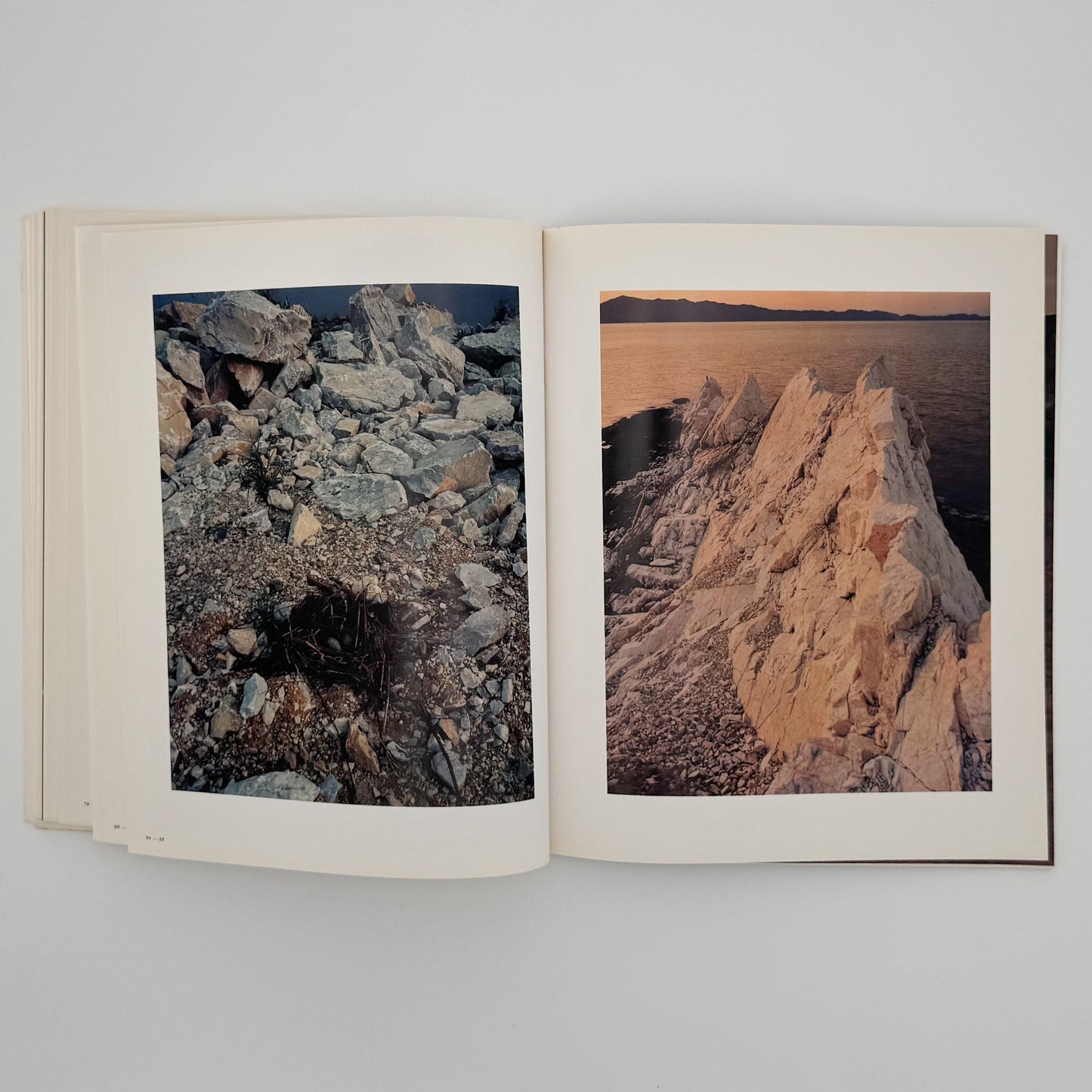Naoya Hatakeyama, LIME WORKS (First Edition)
Naoya Hatakeyama, LIME WORKS (First Edition)
Couldn't load pickup availability
Share
Naoya Hatakeyama, "LIME WORKS"
Quarries and cement factories—sites where mountains are carved away, supporting the foundation of cities.
"LIME WORKS" is a representative work that Naoya Hatakeyama created in his early career, and it is considered the starting point for his later works, such as "BLAST" and the "Rikuzentakata" series.
I visited limestone production areas, including my hometown of Ofunato, and examined the relationship between nature and humans through the traces of mining, the structure of the plants, and the light enveloped in white dust.
There, the "invisible landscape" that sustains civilization—human activity that destroys nature while depending on its blessings—emerges in a quiet and solemn tone.
The perspective cultivated in this work continues on to the moment of explosion in "BLAST" and to "Rikuzentakata."
In 1997, he won the 22nd Kimura Ihei Photo Award for his work on "LIME WORKS" and other projects.
This is an early and definitive work that demonstrates Hata's philosophy, which questions the relationship between nature and civilization through industrial landscapes.
[Title] LIME WORKS
[Publisher] Synergy Geometry
[Publication Date] March 10, 1996 (First Edition)
[Number of pages] 120 pages
[Size] Approximately 29.8 x 24.5 x 1.1 cm, 0.78 kg
[Format] Softcover
[Title Reading] Lime Works
[Author(s), Editor(s), etc.] Naoya Hatakeyama/Author, Isao Konaka/Book Design
[Printing] Dainippon Printing Co., Ltd. / Printing and Binding
[ISBN] 4-915877-39-6
[Condition] Used [5] Fair (light yellowing on all three edges, slight staining)
[Included Accessories] Reader Card
[Published in]
[Related Exhibitions]
Naoya Hatakeyama (1958-)
Born in 1958 in Rikuzentakata City, Iwate Prefecture.
He studied under Seiji Otsuji at the University of Tsukuba, and after graduating, he has been based in Tokyo, continuing to present works that explore the relationship between nature, the city, and photography.
He is particularly known for his works that feature artificial landscapes inherent in the Japanese landscape, such as the limestone quarries that spread near his birthplace, urban underground waterways, dams, and factories.
In 2001, he was selected as the Japanese representative for the Venice Biennale, and he has also addressed social themes, such as photographing his hometown of Rikuzentakata, which was affected by the Great East Japan Earthquake in 2011.
He was awarded the Purple Ribbon Medal in 2015.
Currently, in addition to working as a photographer, he serves as a professor at the graduate school of Tokyo University of the Arts, dedicating himself to nurturing the next generation of photographers.
In 1997, he won the 22nd Kimura Ihei Photo Award for his photo collection "LIME WORKS," among other works.
In 2001, he won the 42nd Mainichi Arts Award for "Underground".
<Related Figures>


















































